Sulphur-organic copolymers for modification of concrete, asphalt and polymers.
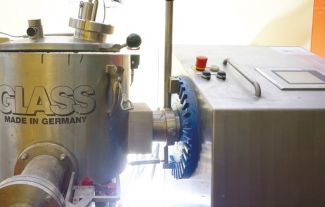
Sulphur-organic copolymers are useful macromolecular materials obtained from semi-finished products of natural or waste origin. They have a wide range of possible applications in the construction, road construction and rubber industries.
This process of producing sulphur-organic copolymers has the ecological advantage of using organic additives of natural origin, such as limonene or turpentine. Securing waste emitting harmful ionizing radiation is another innovative characteristic of the solution. The copolymers produced by the Institute of Polymer and Dye Technology are characterized by thermoplastic properties and are easy to process. This technology will be of interest to the construction industry, road construction and the rubber industry.
Polymer biomaterials design, production, sterilisation, evaluation of properties and expertise.
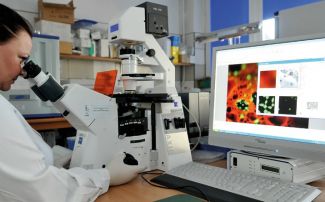
In recent years, hydrogel wound dressings are more and more commonly used in the treatment of burn wounds, ulcerations and decubitus ulcers.
The Institute specialises in the design of hydrogel materials and products (macroscopic hydrogels, micro- and nanogels), including intelligent hydrogels (reacting to stimuli), nanomaterials and products based on polysaccharides and synthetic biodegradable polymers. Radiation technologies are used in the process of material production. This technology may find applications in the medical, pharmaceutical and cosmetic industries.
Identification of cancer changes based on Raman imaging and spectroscopy of human tissue. Translation into clinical diagnostic tests.
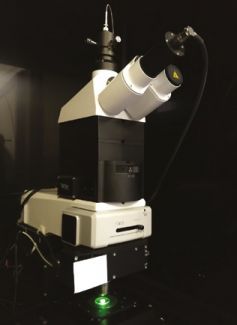
The technology allows to distinguish between normal and cancerous tissue, and determine the degree of malignancy during surgery for in vivo measurements as well as based on ex vivo tissue analysis with high sensitivity and specificity of over 90% during tumour resection and histopathological examination.
The completeness of surgical resection is a key factor in the progress of patients with cancers. Raman biomarkers allow to distinguish between healthy and cancerous tissue with high spatial resolution and sensitivity and specificity of over 90%. Raman- guided surgery provides the biochemical profile of tissues in real time, allowing precise tumor resection. Raman optical biopsy enables estimation of the histological malignancy, is not prone to subjective interpretations and monitors tissues without any external agents, in contrast tohistopathological assessment. Virtual histopathology allows identical results to be obtained as with as standard histopathology (H&E image). In Ramn virtual histopathology, images are obtained within minutes, which radically shortens the diagnosis time for doctors and patients.
This technology will be of interest to hospitals with oncology units for in vivo and ex vivo diagnostics, as well as tomedical diagnostic laboratories focused on identifying cancerous changes.
Real System Analyzer Technology (TAUR).
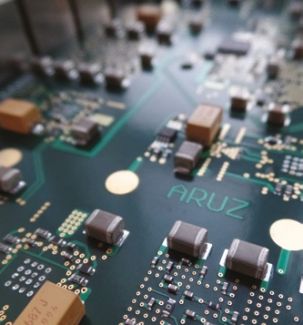
Simulations of molecular systems, especially in the field of bio- and nanotechnology, e.g. simulations using parallel computational algorithms used in the chemistry and physics of such phenomena as phase separation. Polymerization and dynamics of systems containing long macromolecules and polymer networks.
Devices built using the technology developed by the Department of Molecular Physics can contain up to several hundred million operational cells, located in three-dimensional network nodes. They can help solve problems in various fields of science and technology, including artificial intelligence. TAUR machines are a huge and complicated macroprocessors with the features of a cellular automaton. The team from the Department of Molecular Physics and the Department of Microelectronics and Computer Science designed and together with Ericsson built and delivered the Real Complex Systems Analyzer (ARUZ), which is located in the BioNano Park in Lodz. It is a device in which selected TAUR elements were used. This technology will be of interest to IT companies.
Biodegradable polymer composites.
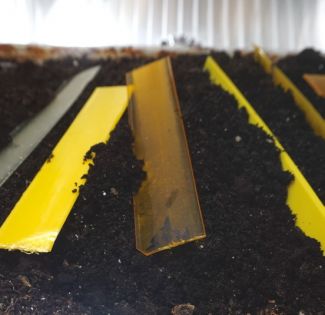
Biodegradable, optical polymer composites with reduced flammability.
Biodegradable polymer composites created by the Institute of Polymer and Dye Technology can be used as packaging materials, disposable products and pro-ecological as well as biodegradable composites. This technology will be of interest to packaging producers, suppliers and retailers.
Organic electronic devices (light-emitting diodes, photodetectors, photovoltaic cells, field effect transistors) – determination of operational parameters.
Production and specification of organic electronic devices.
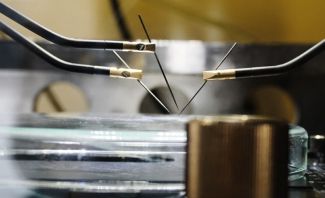
This service offered by the Department of Molecular Physics includes the production of organic electronic devices in an inert atmosphere as well as electrical and optical measurements that enable the operational parameters of the device to be determined. This provides an opportunity to optimize the product and compare the tested devices with those available on the market.
This offer will be of interest to companies in the materials engineering and lectronics industries.
Aging of materials, determination of life time, Materials Aging Laboratory.
Stimulated accelerated aging of polymers.
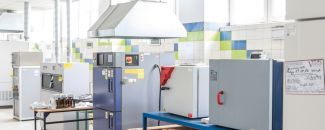
An innovative laboratory created by the Institute of Polymer and Dye Technology allows research to be performed in aging chambers that simulate real working conditions. The climate chamber makes it possible to carry out most climate tests for broadly defined industrial purposes.
This service will be of interest to companies in the chemical, polymer, automotive, packaging and materials industries.
Artificial nose: ion mobility spectrometry coupled with a multi-capillary column.
A technique for analysing traces of volatile organic compounds released from materials in gaseous, liquid and solid form with concentrations of from ppb to several ppt.
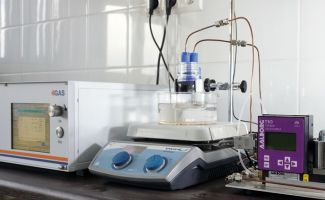
Ion mobility spectrometry is a state-of-the-art technique for easily and quickly analyse gas or aerosol obtained from samples in liquid or solid form. It is based on of the mobility of ionized particles in the carrier gas under the influence of an electric field. Due to its range of possible industrial applications and the possibility of analysing more than just individual compounds, the service is an innovation on an international scale.
This offer developed by the Institute of Polymer and Dye Technology will be of interest to companies in the industrial, food, environmental protection and medical diagnostics fields.
Irradiation of materials.
Irradiation by gamma rays is a method of sterilization or hygienisation applied to materials, finished products and semi-finished products, used in technological processes.
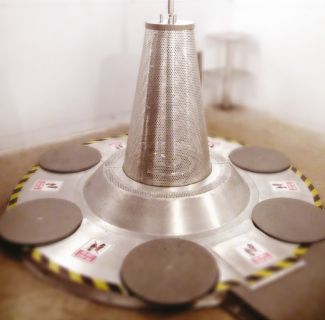
The Institute has a panoramic radiation chamber with initial radiation sources activity of Co-60 2200 TBq (60 kCi). The installation is equipped with an Ob-Servo-D panoramic gamma irradiator. The device is the only one of its kind in the country. It enables commercial use of radiation technologies in many areas, giving economic benefits by bringing high-quality products to the domestic market and increasing the competitiveness of domestic goods on foreign markets.
This service will be of interest to companies in the medical, pharmaceutical, cosmetic and veterinary industries, as well as to R&D units and those involved in the preservation of historical buildings.
